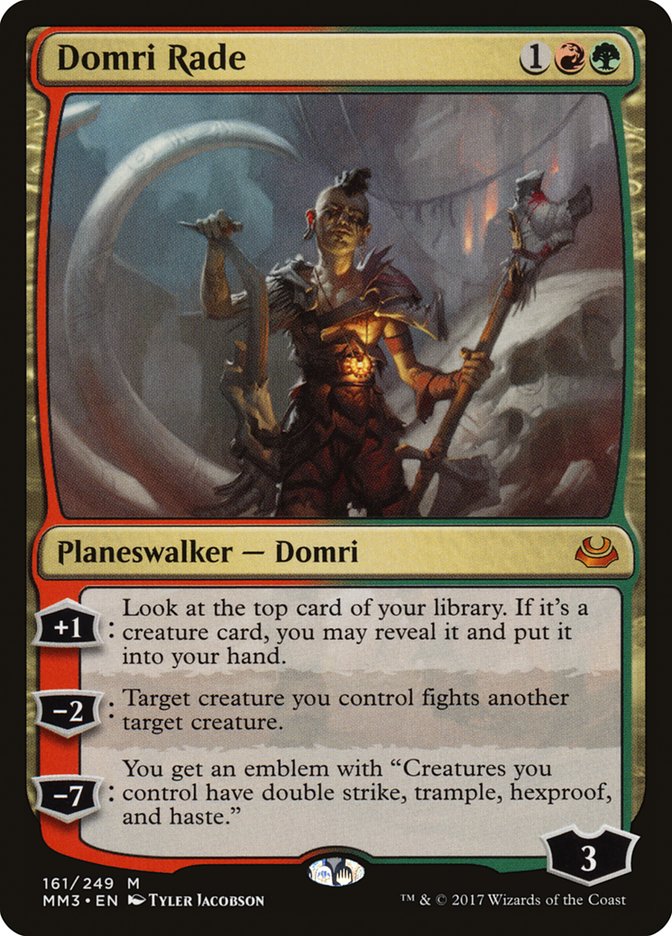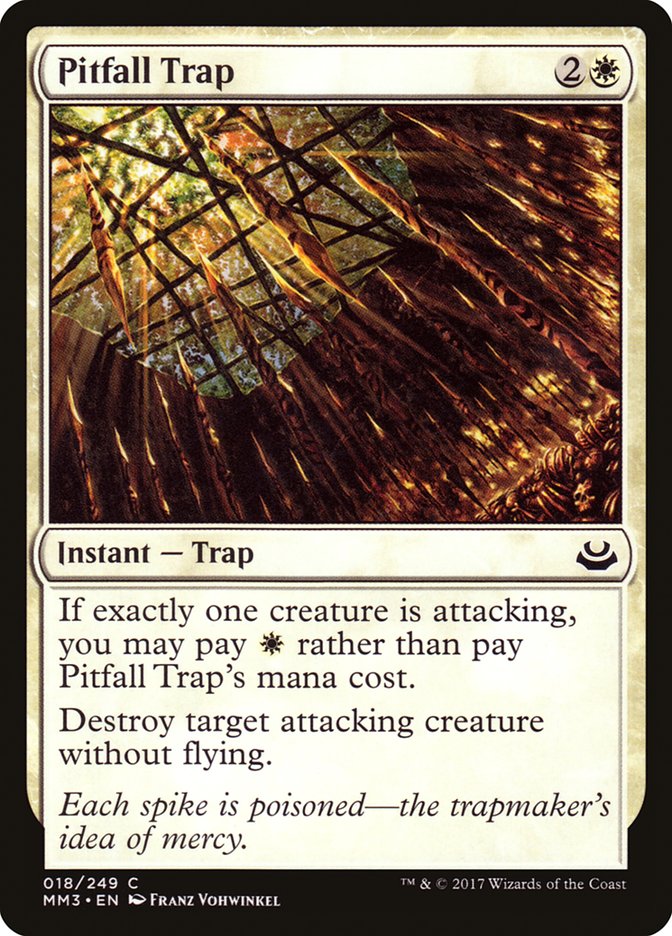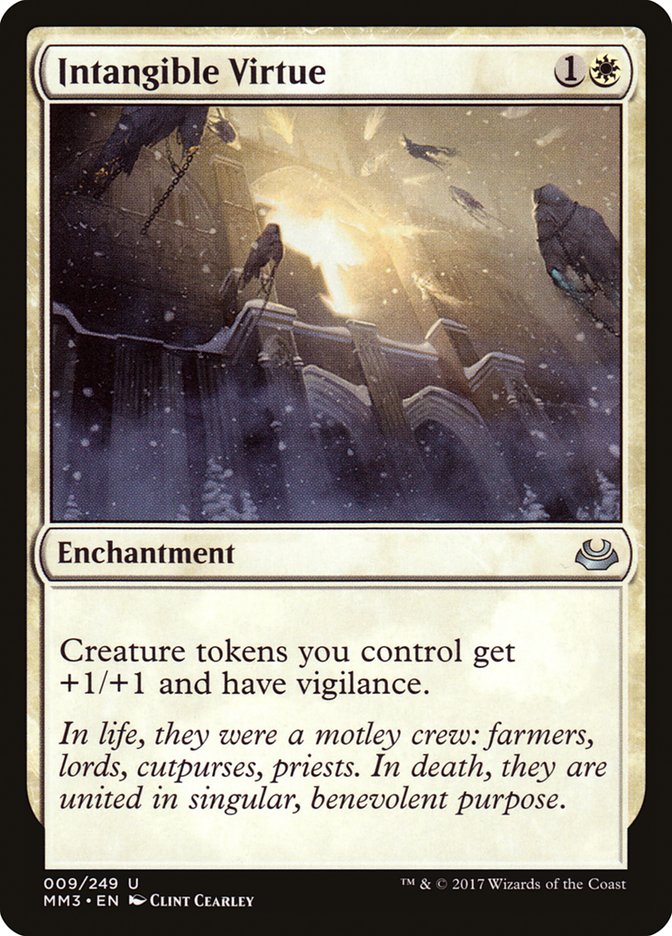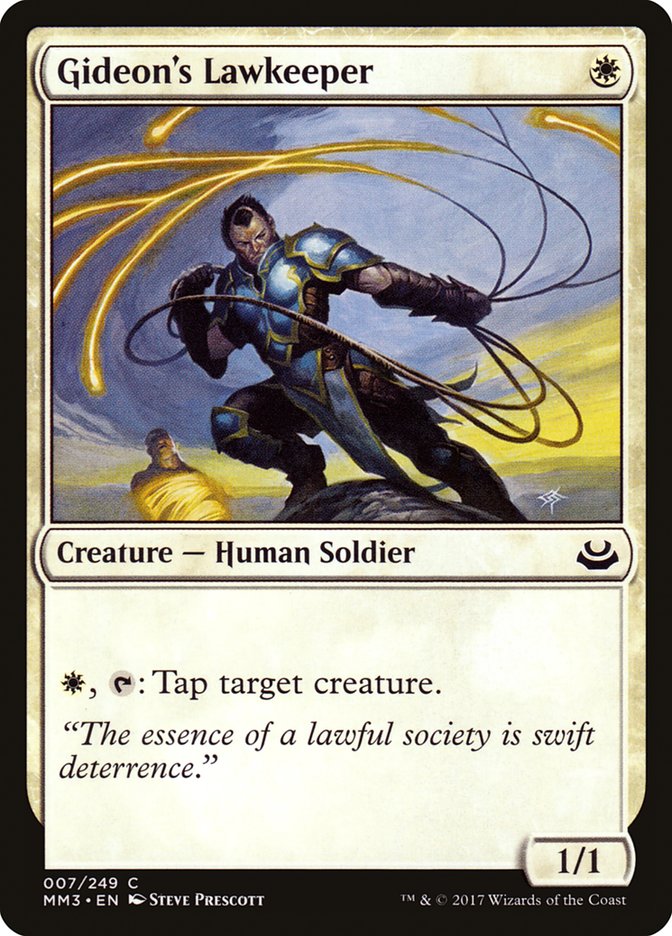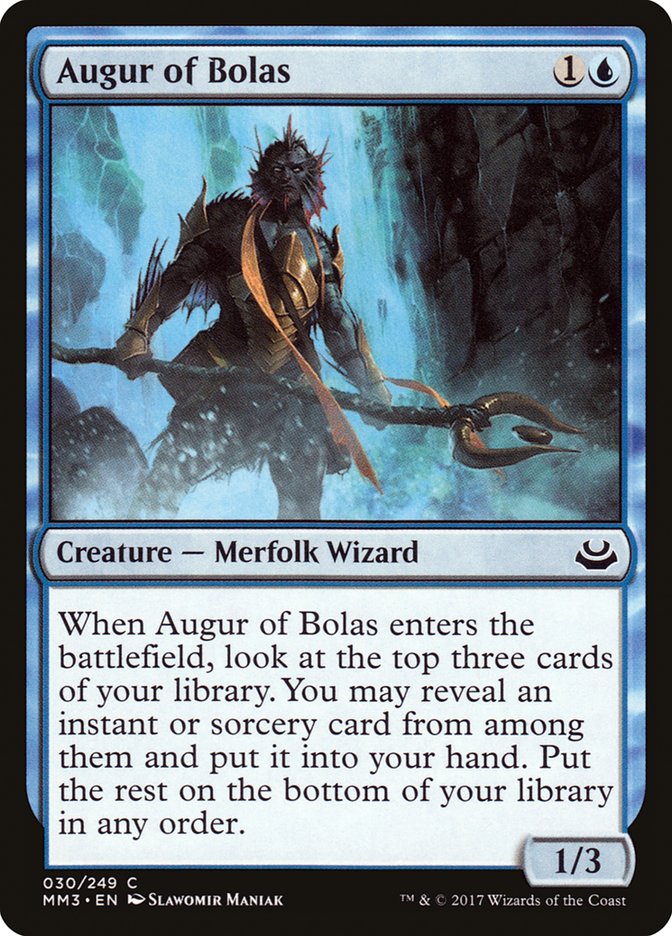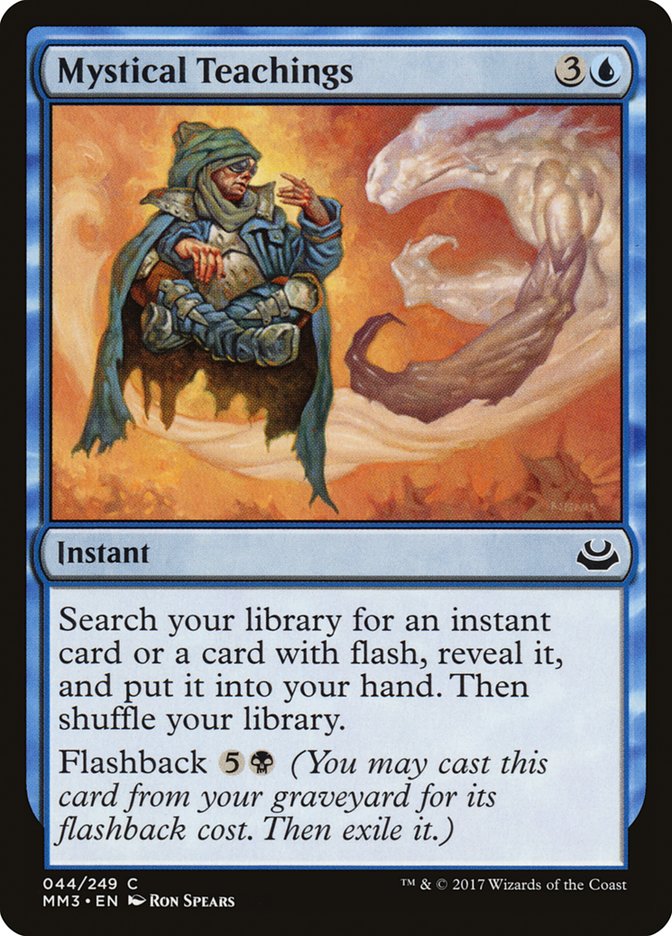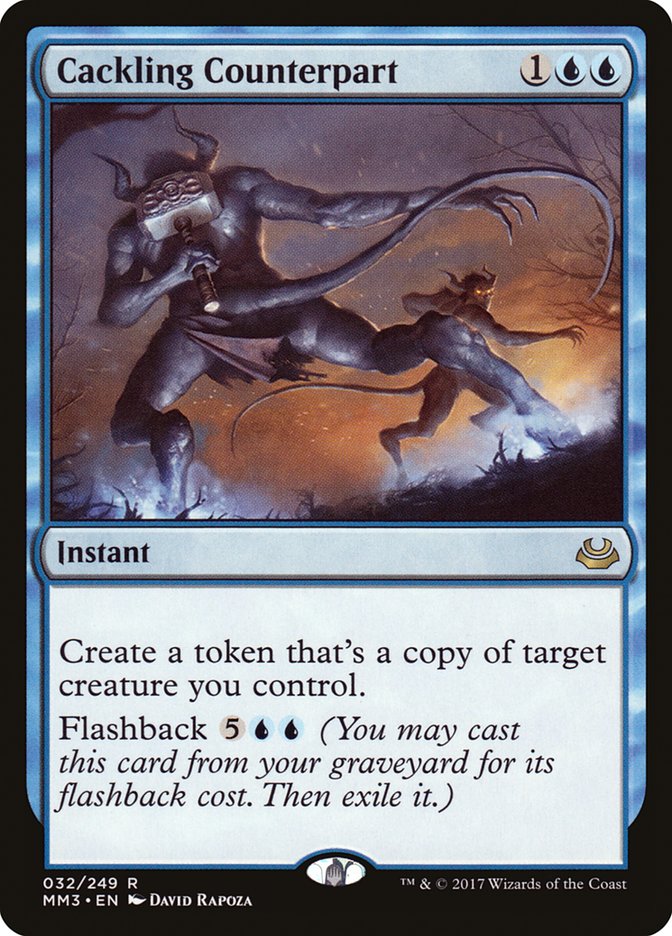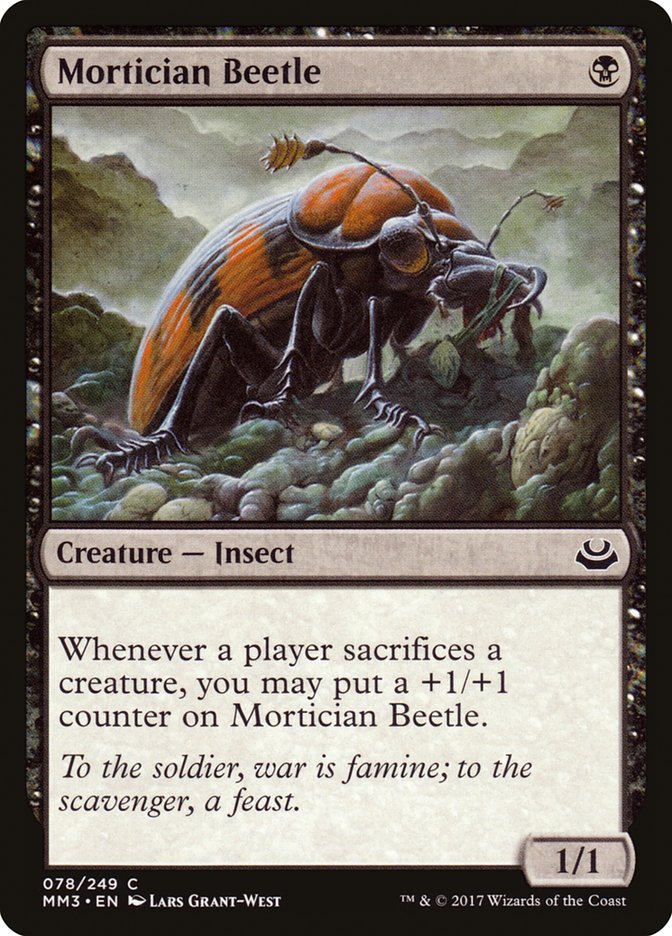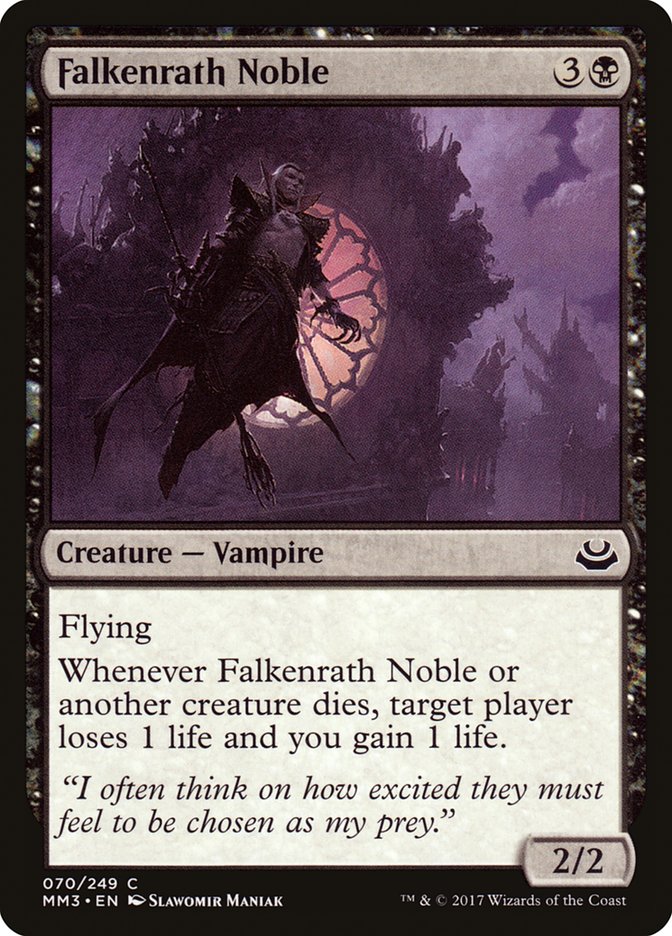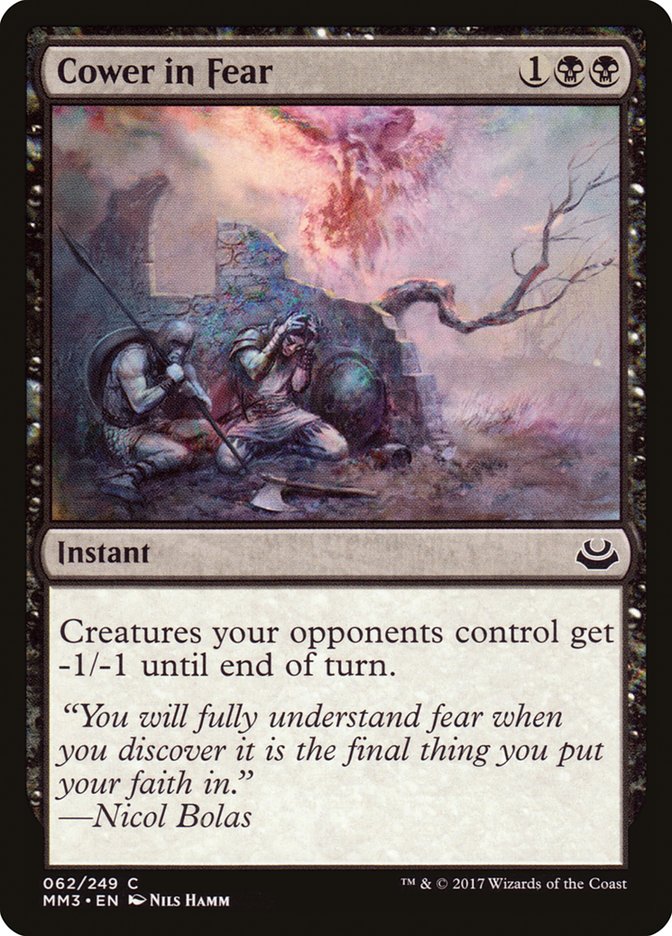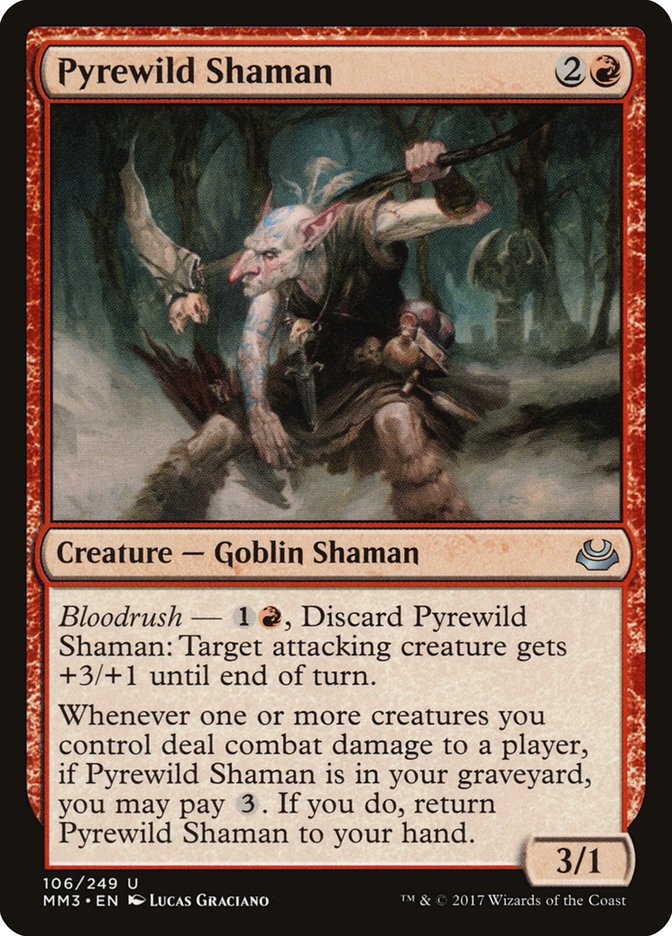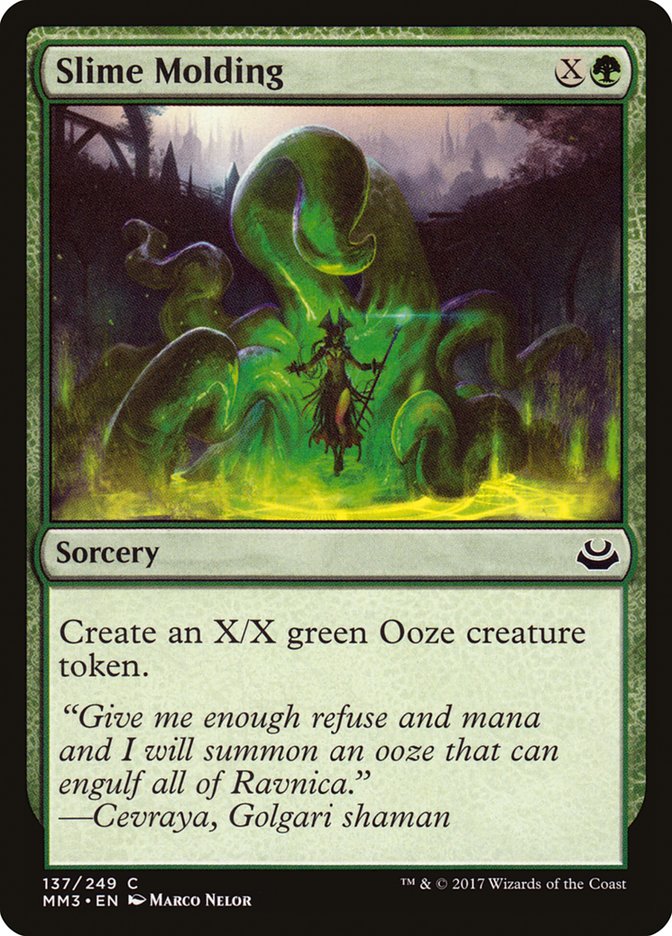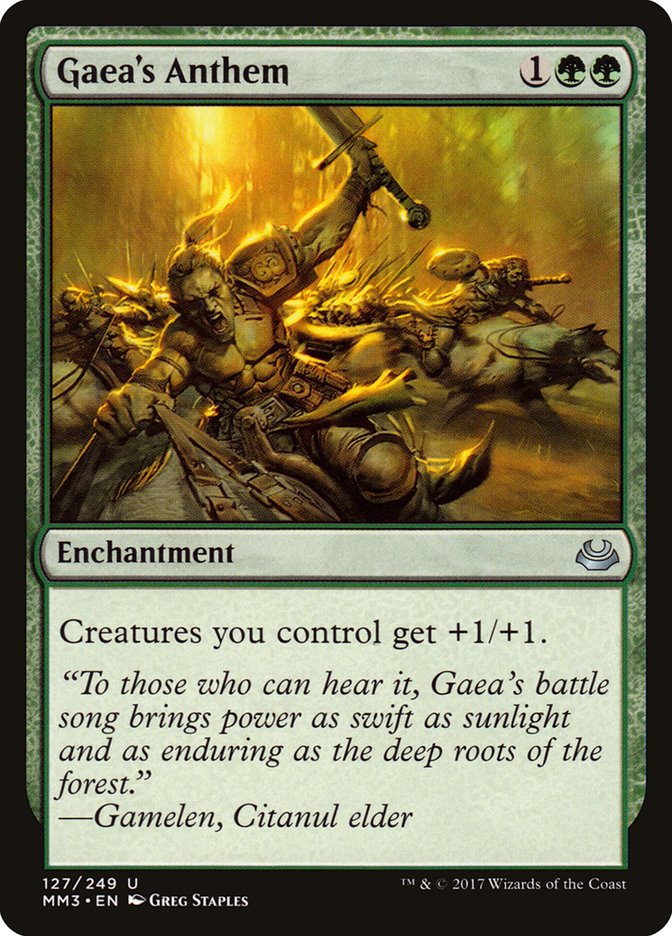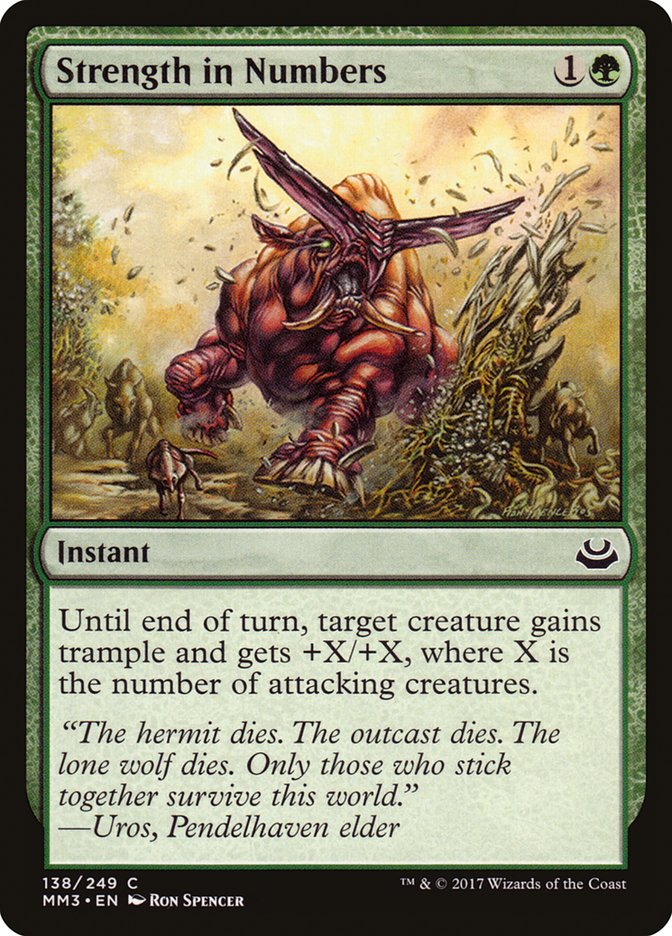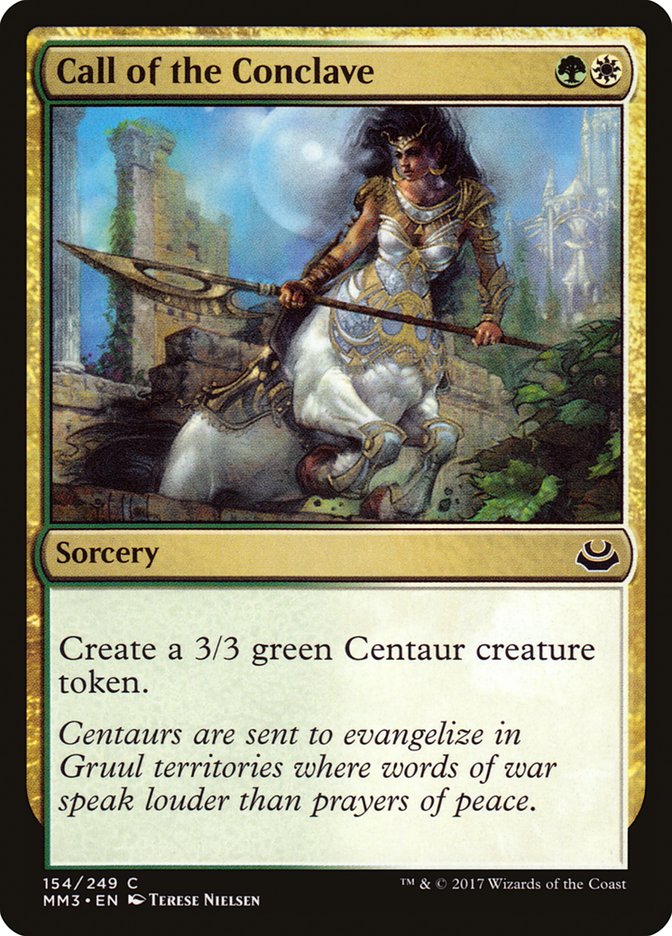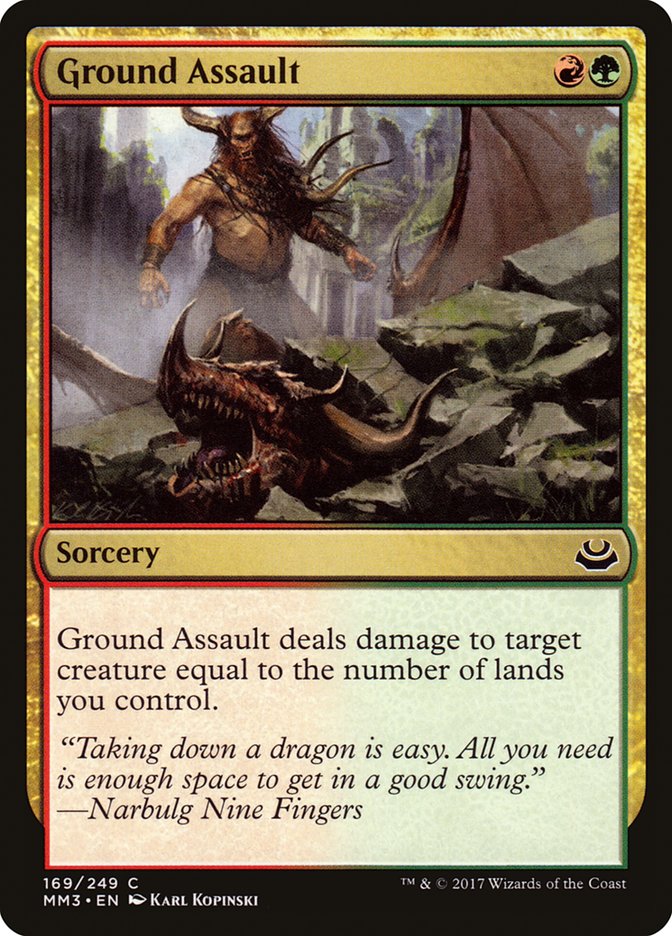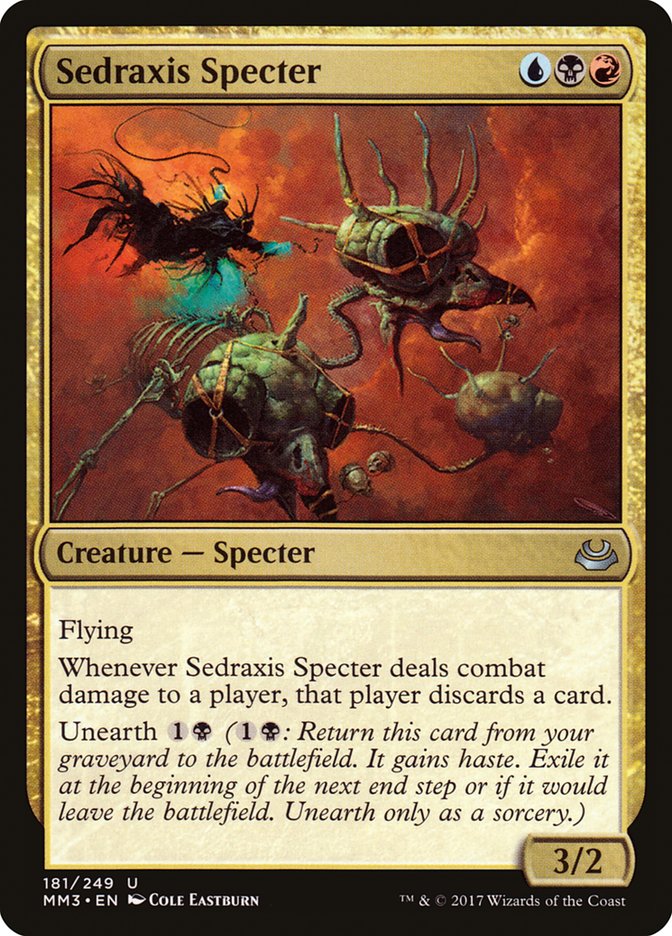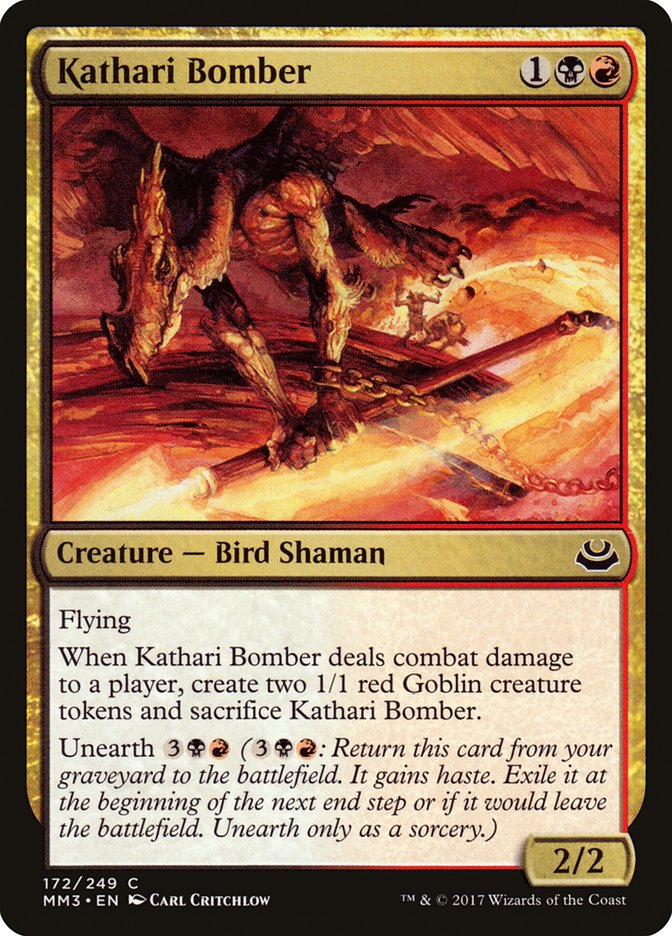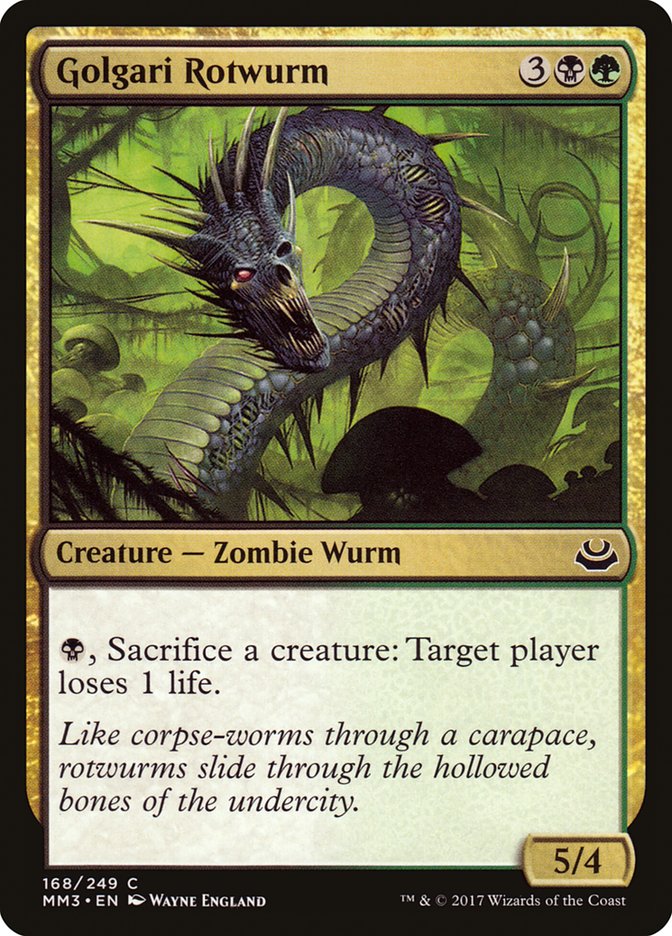Standard can get stale, even for a brewer. Amonkhet is still several weeks away, and while I’m itching to explore the sands and stones of this new plane, I need a distraction.
Oh, hello there, Modern Masters 2017.
As I’ve made clear before, Modern as a Constructed format is not one of my skills, either in playing or creating decks and strategies. It’s fun, and I still enjoy it, but it’s not something I’m particularly well-attuned to participate in. From a Constructed perspective, I’m still thrilled that sets like Modern Masters 2017 exist, as they fulfill demand for staples in a format that’s only growing, getting cards in the hands of more people and ideas in the minds of more brewers. While I may not have a great personal rapport with Modern Constructed, that’s okay; Modern Masters isn’t just about Modern. It’s also a Limited format, and I’m all about those 40-card decks.
As a lover of Limited and an avid Cube builder, these sets also provide essential development tips and context for specific interactions to help me craft my own draft set to be as balanced, exciting, and entertaining as possible. For this reason, this Modern Masters set, as well as the two previous ones and even last year’s Eternal Masters set, attract special interest for me mostly because they’re ways to get a “best of” draft scenario, with real stakes and intensity, just like when you drafted the original cards in their native format.
For those of you who don’t know what a Cube is, a “Cube” is a draft set that you create yourself, either using existing Magic cards or, in some instances, by creating entirely new Magic cards of your own design. A good Cube is designed, balanced, and distinct, providing an entertaining, customizable draft experience that’s often centered on a theme. Usually stored in a long box, this stack of sleeved cards (with sleeved basic lands) can be used to build “booster packs” that you draft in any number of ways, build 40-card decks, and battle against each your friends’ drafted decks.
My main Cube, which started in 2012 as a 360-card Modern Cube made up of only commons and uncommons, has since expanded to include all modern-bordered cards printed in a draft format at common or uncommon, admitting Conspiracy and Eternal Masters into the card pool. Still, playing the majority of sets currently in Modern as draft formats has helped me keep my eyes open for reminders of great cards I’d forgotten about, potential rarity shifts of cards once out of the “peasant” range, and to relive the nostalgia of what got me, and kept me, in Magic.
Like the soon-to-be smash hit coming-of-age screenplay I’m working on, I don’t like to talk about my Cube much unless you ask. However, given the exciting realm of a new, interim Limited format for us to enjoy, it seems prudent to look at the cards from Modern Masters 2017 that may not hit the front pages, both from what this means for a Cube builder based on rarity restriction and for the rest of you going to your local shops next weekend to play for your chance at winning more Modern Masters 2017 packs. You’ll be paying a higher cost for the privilege to draft this set, so it’s worth investing a little time to research the set’s primary strategies, their practical viability, and how you can get to, shall we say, the top of the pack.
Let’s look at this set’s good cards by color, as well as critical shifts in rarity that make a card, and its associated strategies, considerably more reliable. Like my Cube, we’ll mostly be ignoring the rares and mythics; from a draft perspective, you take them if they’re good, pass them if they’re not. Specific rares appear infrequently enough that you can’t reliably hope to build a strategy around them.
White
Pitfall Trap was always one of my favorite Traps from Zendikar because of its flexibility and efficiency. Back then, it was only an uncommon, but now this effect is at common. In the early game, keeping one mana open to slaughter a two-drop is easy, and this effect will appear frequently enough that you’ll need to keep an eye out for a lone white mana and weigh the risk of a nonessential attack and losing your best attacker.
Out of Modern Masters 2017‘s mono-white cards, fully 40% of them interact in some way with tokens. This startling percentage clearly points to the best strategy in the color. Token strategies have always been viable in Limited; sweepers are often at a higher rarity level. Niche cards like Intangible Virtue, therefore, gain considerable abstract value when your chances for playing a critical mass of tokens grow.
Gideon’s Lawkeeper is a solemn reminder. Our current tappers for Limited are diminished versions of their former selves; Sigardian Priest, Pacification Array, and Deadlock Trap are clumsy and expensive, and they haven’t been good for a while (see: Dromoka Dunecaster and Akroan Jailer). One-mana 1/1s used to do it for next to nothing. Goldmeadow Harrier, Gideon’s Lawkeeper’s functionally identical predecessor, eventually got kicked out of my Cube due to its power level.
Blue
While blue’s clearly comfortable as a supporting color here, the instant and sorcery package is formidable. Augur of Bolas, now a common, provides a great early blocker while likely replacing itself with a solid instant or sorcery, provided your deck is built appropriately. Rewind, now also a common, is the set’s go-to counterspell. It’s designed for you to leverage your end step by protecting you from your opponent’s next big threat but also by letting you use the returned mana to cast something that helps you get ahead. A deck might even want multiple copies of Rewind; if your first one goes through but your opponent was trying to bait your counter and tap you down, Rewind fixes itself.
Mystical Teachings did not get a rarity change, but it’s still a great way to pass the turn with mana up and do something with it. While it’s best known for its ability to get instants, it can also find the set’s five flash creatures: Snapcaster Mage; Venser, Shaper Savant; Restoration Angel; Spire Monitor; and Deputy of Acquittals. Consider that functionality when this potentially low-priority pick comes by.
Cackling Counterpart was always a sleeper hit for me in Innistrad Limited. Its power may be directly correlated to the power of your creatures, but if you’ve got decent creatures, this is a fantastic trick, and the Flashback is often overlooked.
Black
All three of these cards got rarity changes, and Mortician Beetle most significantly. This 1/1 used to be a rare in Rise of the Eldrazi, but this largely comes from being a product of a set that had Eldrazi Spawn, which you could sacrifice freely and for profit, which meant Mortician Beetle would be happy to get a +1/+1 counter as an added bonus. Bear in mind that there are very few ways to make your opponent sacrifice in black, though there are several common-level black cards that let you eat your own creatures. Like white, though, you’ll need tokens for it to be sustainable.
Falkenrath Noble is a solid uncommon that’s been in my Cube since Day 1. As a common, this Wind Drake with
Cower in Fear, while a weak sweeper, is still an instant, and it happily kills Bird and Spirit creature tokens. It’s also now a common, meaning pairing two together (or stashing a couple in your sideboard) will be easy.
Red
Pyrewild Shaman was high on my “fun-to-play-with” scale during Return to Ravnica block, and now that it’s uncommon, it’s likely going in the Cube. When used with bloodrush, it provides a nice boost, and it can be recycled endlessly as long as you’re connecting. It never felt right as a rare; this is much better.
Goblin Assault, also down from rare, is a great engine to punch through a soft defense. Moreover, if you’re getting sideways every turn, your combat tricks are better-masked. Your role as general slides back, so it’s much harder for your opponent to know if you’ve got a thing or two up your sleeve.
Ancient Grudge, which has moved up to uncommon, has almost no compelling targets. The set has only fourteen artifacts, and few of them are worthy of half a card and mana expended to cast it. Ten of them comprise the Signet cycle, two are sideboard fodder, and the other two might be reasonable targets: Tower Gargoyle and Basilisk Collar.
Thunderous Wrath, a fourth card with a rarity change, is now a common. When compared to niche playable cards like Explosive Impact and Lava Axe, this card seems to be at parity. However, five life is a whole lot, and with scry’s prevalence in each color in this set, it’s reasonable to plan your miracles well. I’m fairly convinced red will want a fairly high number of these despite its high standard mana cost.
Green
Slime Molding has the advantage of being relevant as early as turn 2 or as late as turn 10. As a common, it’ll be easy to obtain and leverage with those populate effects that you picked up. Speaking of tokens, Gaea’s Anthem as an uncommon is a game-changer. Tokens are often criticized for their diminutive size, but Gaea’s Anthem gives even the lowliest creature reasonable stats. This was a color-shifted rare printed in Planar Chaos, and what a way for it to return!
Strength in Numbers, from Time Spiral, as I recall, was a particularly spicy combat trick. Notice the text; it says “Until end of turn, target creature (not ‘target attacking creature’) gains trample and gets +X/+X, where X is the number of attacking creatures (not ‘attacking creatures you control’).” It once lived in my Cube as a cute defensive trick, allowing my otherwise shrimpy team to stand against their largest attacker. The offensive potential is clear, but the defensive potential is subtle enough for many players to miss.
Thornscape Battlemage, in a rare exception, is the only one of a clearly-defined cycle being printed this time. While Ancient Grudge may not be worth it, paying 2GW for a 2/2 that breaks a Dimir Signet is good, and a 2RGW Tin Street Hooligan / Steamcore Weird is great. This might incentivize Naya a bit for you thanks to its increased flexibility.
Gold and Lands
Multicolored cards, especially in a set like this that supports Return to Ravnica standards and Shards of Alara staples, often survive as the hallmark cards of the set. Their manabases are also flexible, allowing a more open, consistent draft in multiple colors.
Wayfaring Temple and Call of the Conclave both got a rarity downgrade. Wayfaring Temple, like Scion of the Wild before it, was much less predictable to play, as an empty battlefield state would render it irrelevant. Call of the Conclave, now a common, should be a mainstay in the populate deck, and those decks should take any number of these they can; a Watchwolf that duplicates is good. Ground Assault was always a fine removal spell, and now it’s easier to draft than ever.
Sedraxis Specter and Kathari Bomber give great bonuses for connecting their opponent, and the evasion is a big plus. Grixis and its unearth mechanic have made a strong comeback in this set. While Zur the Enchanter might be a tempting windmill slam, bear in mind that only two unconditional enchantments in this set are both three mana or less and totally within his colors: Gift of Orzhova and Seal of Doom. That makes the three-color 1/4 flyer a big ask.
Finally, Golgari Rotwurm is a card that I have enjoyed playing in my Cube since the day I first sleeved it and it continues to be a premier card in the draft. It’s excellent at closing life gaps, it’s efficient and sturdy, and the cost is just right. When I saw that this was reprinted, I was curious if they’d bumped it to uncommon. Nope, still great!
The land choices for this set mirror some of my own (I use the tri-color cycle like Seaside Citadel, Ravnica bouncelands like Gruul Turf, the Vivid Cycle like Vivid Creek, and the creature-land cycle from Tenth Edition like Spawning Pool). I certainly don’t have fetchlands, but no doubt they will be a joy to open while you draft, giving the trading markets at your local shop a much-needed influx of supply.
I’m very excited to give this set a go; while I’ll obviously be restricted by the cards I open and those cards that are passed to me, from purely a power level, green and white seem to have it going on, while red has some exceptional options, too. Black is good in conjunction with other things, and I know someone’s going to draft the perfect blue and red instant deck. The set appears interactive, enjoyable, and deep in a Draft environment. That being said, at the end of the day, your best draft experience after the set’s release will be clandestinely showing your neighbor the foil Scalding Tarn you just opened while keeping a good poker face.
What’s your favorite reprint from Modern Masters 2017? It can be your favorite for any reason. Maybe the reprinting of it will reduce the price enough for you to finally grab them, or maybe you have a great story around one of the lesser known cards in the set. Perhaps a Limited interaction got your brain thinking about an all-new Constructed brew?




